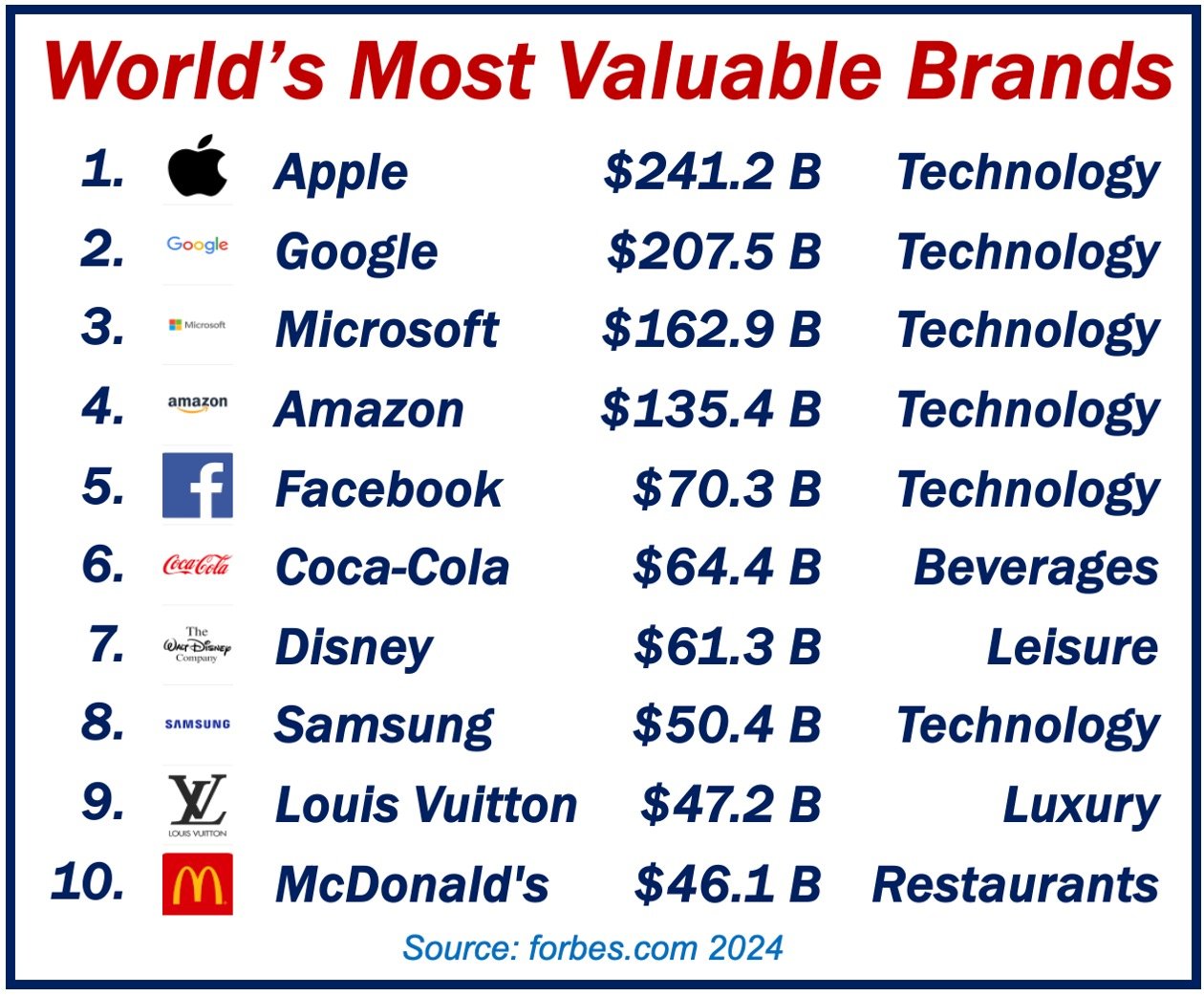Brand – definition and meaning
A Brand is the image and personality of a product or service that a business provides. A product’s features, such as logos or slogans, make it unique and different.
Branding was originally used hundreds of years ago to differentiate cattle. Cattle ranchers used branding irons to burn symbols on their livestock. They branded them so that slaughterhouses could identify from which ranch the cattle came.
As commerce evolved, these symbols became synonymous with the reputation and quality of the goods, laying the foundation for modern branding practices.
Farmers also branded their livestock so that it would be easier to find them if they were stolen.
However, brands are now more than just a means of differentiating products. Today, brands also convey a ‘promise.’ The promise is that the product you buy will meet the standards the manufacturer seeks to deliver.
Brands are intangible reputational assets. In fact, they are the most valuable asset of many corporations. Intangibles are assets you cannot touch, they have no physical form but are valuable for the company.
Why is branding important?
Quality branding can result in higher sales of a product. In fact, even products that are associated with certain brands benefit from higher sales too.
A good example would be someone who enjoys Coca-Cola and tries other soft drinks by the company. The Coca-Cola Company also sells Sprite, Fanta, and Powerade.

The positive brand image of Coca-Cola helps drive a consumer to other Coca-Cola Company products.
Some companies give each of their products its own brand name. We call that strategy individual branding. It contrasts with umbrella branding, in which the whole product range has the same name.
The psychology behind branding
Brands have a psychological as well as an experiential aspect.
Put simply; the brand experience includes “all the interactions people have with a product, service, or organization.” says Marty Neumeier. Neumeier is Director of Transformation at Liquid Agency Inc.
Brand image is the consumers’ perception of certain brands. Not only does it provide a mental image for the consumer, but also emotional value.
For example, Volvo is famous for its safety while we all see Ferrari as sporty. A positive brand image can do wonders for a company.
Establishing a brand
When brands develop a high degree of popularity, or they become famous, they have brand recognition.
Brand recognition can grow. In other words, its popularity can increase. Eventually, it becomes a brand franchise.
Having brand recognition means that you are on people’s radar. How can brands improve their recognition? By increasing awareness of the brands.
Brands want people to know they exist, so they expand their reach. Marketing executives can achieve this through advertising, word-of-mouth, and engagement in the community.
Once brands have proved themselves in the market, they want customers to return. They gain customers by providing a compelling experience.
If a company can sustainably achieve this, then consumers remain happy. It is important to continue nurturing a sense of loyalty toward specific brands.
Brand management is the marketing technique that aims to improve the reputation of brands or products.
The ultimate goal – brand loyalty
All brands in the market want their consumers to come back on a regular basis.
The American Marketing Association defines brand loyalty as:
“The situation in which a consumer generally buys the same manufacturer-originated product or service repeatedly over time rather than buying from multiple suppliers within the category.”
Companies achieve brand loyalty if they prove to their consumers that their priorities include maintaining individual customer relationships.
This loyalty transcends mere satisfaction, often creating an emotional attachment to the brand that can withstand market changes and competitive pressures.
Some loyal customers even refuse to purchase knock offs (brands that sell at a much lower price).
Rebranding
Rebranding is the process of changing a company’s image and feel, i.e., changing its brand. The aim is to create a completely new image, so that the company is attractive to consumers.
We can also use the term for products and services.
Marketing executives rebrand to raise awareness of a company’s new identity.
Brand-like vocabulary and usage
There are many terms in the English language related to brands, especially compound nouns. A compound noun is a term consisting of two or more words. Let’s have a look at some compound nouns containing the word “brand,” their meanings, and how we use them in a sentence:
-
Brand Identity
The collection of all elements that a company creates to portray the right image to its consumer.
Example: “The startup worked hard to develop a strong brand identity that would resonate with its target audience.”
-
Brand Manager
A person responsible for adapting a brand strategy for a company’s target market.
Example: “As a brand manager, she played a key role in driving the market success of her company’s products.”
-
Brand Loyalty
The consumer’s preference to continue buying the same brand, which can be demonstrated by repeated purchases.
Example: “Due to the brand loyalty it enjoys, the company didn’t fear the introduction of a new competitor in the market.”
-
Brand Ambassador
A person who promotes and represents a brand to the public, typically used in marketing campaigns to increase brand awareness.
Example: “The brand ambassador shared her love for the skincare line through her social media platforms.”
-
Brand Equity
The value a brand adds to a product or service, reflected in how consumers think, feel, and act with respect to the brand.
Example: “High brand equity meant that customers were willing to pay more for their preferred brand of sneakers.”
-
Brand Recognition
Consumers’ ability to recognize or recall a brand as a result of the company’s marketing campaign efforts.
Example: “Their logo was a huge part of their brand recognition, being visible on billboards across the country.”
Video – What is a Brand?
This educational video, from our sister channel on YouTube – Marketing Business Network, explains what a ‘Brand’ is using simple and easy-to-understand language and examples.

